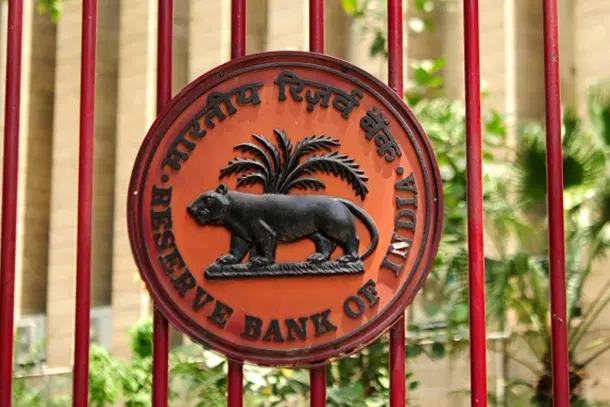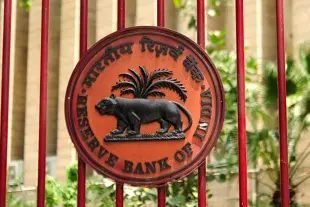Economy
Macro View: Where The Banking Sector In India Stands After The Latest Rate Hike
Kembai Srinivasa Rao
Aug 10, 2022, 02:03 PM | Updated 02:02 PM IST
Save & read from anywhere!
Bookmark stories for easy access on any device or the Swarajya app.


Staying ahead of the curve, Reserve Bank of India (RBI) raised the repo rate by 50 basis points, a tad higher than street expectations. The repo rate now stands at 5.40 per cent. While rate hike is needed to fight imported inflation and geopolitical risks, the magnitude of it is the prerogative of individual central banks, customised to domestic macroeconomic nuances.
Major economies facing historic high inflation rates and slowing economies have been aggressive in hiking rates and some of them even front loaded rate hikes. One consequence of that was that risks spilled over to the emerging market economies that have an umbilical connection with traffic of foreign portfolio inflows.
Major economies are also reeling under the fears of stagflation and recession. The Bank of England, while hiking its policy rate, was categorical about the recession risks. In its latest World Economic Outlook, the International Monetary Fund (IMF) cut the 2022 global gross domestic product (GDP) estimate to 3.2 per cent, lower than the April forecast, and about half the rate seen last year. With no traces of peace in Europe, the exacerbated and persistent risks have begun to percolate risks to larger sets of economies.
India’s Domestic Economy
It is better poised to record steady growth so far. The conditions of the economy are well summed up by RBI — “In an ocean of high turbulence and uncertainty, the Indian economy is an island of macroeconomic and financial stability”. But with intense global connectedness, dependence on imports and outflows of foreign portfolio investors (FPIs), how long the domestic economy can shield itself from the onslaught of external sector risks is to be watched.
Looking at the resilience and recovery of key sectors, RBI maintained the GDP outlook for financial year (FY) 23 intact at 7.2 per cent but it revised the inflation projections upwards to 6.7 per cent, considering crude prices might stay in the range of $105 per barrel.
The RBI is committed to tame inflation back to the 5 per cent range by early FY24, on way to its midpoint — 4 per cent.
The Purchasing Managers Index (PMI) manufacturing rose to an eight-month high in July. PMI services indicated continued expansion in July, although it fell in June. The farm sector is expected to do better with near normal monsoon.
Though RBI is staying away from its accommodative stance, it still continues to maintain a tenuous balance between inflation control and growth. That is the reason that the RBI is candid in its assurance to market players about ensuring adequate liquidity with well-balanced interplay of variable rate repo (VRR) and variable rate reverse repo (VRRR) operations as and when warranted.
Bank Credit Growth
One observation that is oft-repeated is that banks cannot depend on RBI funds to manage resurgence of demand for credit. Bank credit growth has accelerated to 14 per cent (year on year) as on 13 July 2022 from 5.4 per cent a year ago while deposit growth is still languishing at 8.4 per cent.
The incremental credit to deposit (CD) ratio increased from 77.2 per cent in March 2022 to 246.8 per cent as of 17 June 2022 signifying pressure on liquidity of banks. With credit growth surpassing deposit growth by wider margin, it calls for more innovative asset liability management (ALM) strategies. Banks will have to augment deposit growth and get reconnected with customers. The weakened link between depositors and banks found during Covid times have to be rejuvenated to bring back deposit growth.
The culture of contactless banking might have brought a divide in bank-customer relationships that need to be reinvented. At the same time, banks have strengthened their ties with borrowers during the pandemic by either providing assistance in restructuring loans or granting temporary loans to revive their activities. The improved ties have visibly helped in better asset quality management.
In the midst of rising interest rates, banks increase deposit rates slower than lending rates to maintain revenue equilibrium but with deposit growth coming to the centre stage of banking operations, they need to relook at their pricing strategy. According to SBI Research, the weighted average lending rate on outstanding and fresh rupee loans has gone up by 19 and 31 basis points from March 2022.
On the other hand, the weighted average domestic term deposit has moved up by only 10 basis points during the same time. With cost of near term, even overnight money going up due to rising repo rates, it is better to front load deposit rates to ensure a sustained inflow instead of depending on borrowings to fund their commitments.
Negative interest rates on bank deposits were a limiting factor in augmenting deposit growth. The deposit growth strategies have to be fine tuned to tap resource growth. With rising cost of living, the potentiality to save might be shrinking but with specific efforts banks have to attract deposit resources to meet the rising demand for credit which, in turn, can hasten the revival of the economy.
Amid the rising rates, banks will have a daunting task in augmenting enough resources to fund growth — a task they need to undertake aggressively in the larger interest of the economy.
The author is Adjunct Professor, Institute of Insurance and Risk Management – Hyderabad. The views are his own.





